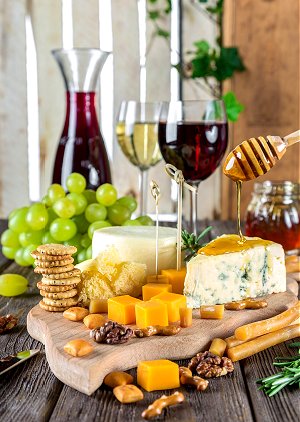 Gastronomy & Wine TourismGastronomy and wine tourism has emerged as one of the most sophisticated and culturally enriching forms of travel, where culinary experiences become the primary motivation for destination choice. This sector combines cultural heritage, agricultural traditions, and culinary innovation to create unique tourism experiences. France stands as the archetypal wine tourism destination, with regions like Bordeaux and Champagne offering visitors immersive experiences in wine culture. These regions have developed sophisticated tourism infrastructure around their vineyards, combining historical wine traditions with modern visitor experiences. Educational programs, tasting sessions, and vineyard tours create comprehensive wine tourism products that attract connoisseurs and casual enthusiasts alike. Italy presents a complex mosaic of regional culinary traditions, each with its distinct identity and appeal. Regions like Tuscany and Piedmont have successfully integrated wine tourism with broader gastronomic experiences, where visitors can explore the connection between territory, tradition, and taste. The country's success in linking food tourism with cultural heritage demonstrates how gastronomy can enhance overall destination appeal. Spain's gastronomic tourism, particularly in regions like the Basque Country with San Sebastian, showcases how traditional cuisine can evolve into high gastronomy while maintaining authentic roots. The country's wine routes, especially in regions like Rioja and Ribera del Duero, provide examples of successful wine tourism development. In the New World, California's Napa Valley has redefined wine tourism for modern audiences, combining premium wine experiences with luxury hospitality and culinary excellence. This model demonstrates how relatively young wine regions can create compelling tourism products through innovation and quality focus. Asian destinations have developed unique gastronomic tourism offerings. Japan's sophisticated culinary culture attracts visitors seeking both traditional and contemporary Japanese cuisine, while destinations like Singapore and Bangkok have become centers for street food tourism, offering authentic local flavors in accessible formats. The economic impact of gastronomy and wine tourism is particularly significant due to its high-value nature. Culinary tourists typically spend more than average tourists on food, wine, and related experiences. The sector also supports extensive supply chains, from local agriculture to hospitality services. Technology has transformed how visitors engage with food and wine tourism. Mobile apps guide visitors through wine regions, make restaurant reservations, and provide information about local specialties. Social media has become a crucial tool for promoting gastronomic destinations and experiences. Sustainability has become central to gastronomic tourism, with increasing focus on local sourcing, traditional production methods, and food heritage preservation. Many destinations now promote "zero kilometer" cuisine and organic wine production as part of their tourism offering. Educational components play a crucial role in modern food and wine tourism. Cooking classes, wine education programs, and producer visits help visitors develop deeper appreciation for local culinary traditions and wine culture. These experiences create lasting connections between visitors and destinations. The future of gastronomy and wine tourism lies in its ability to combine tradition with innovation while maintaining authenticity. Successful destinations will continue to develop unique experiences that celebrate local food culture while meeting evolving visitor expectations for quality and sustainability.
| | |
| Powered by MMS vers. 5.2 - © 2024 EUROTEAM |
|---|

